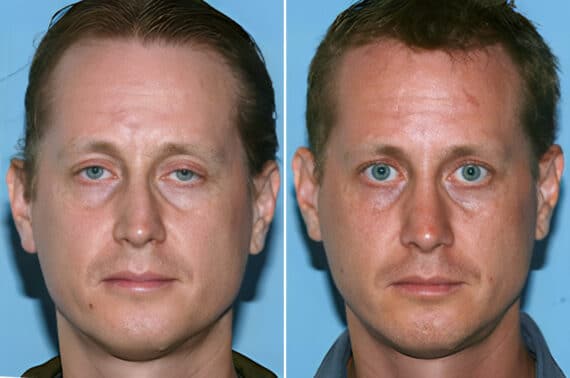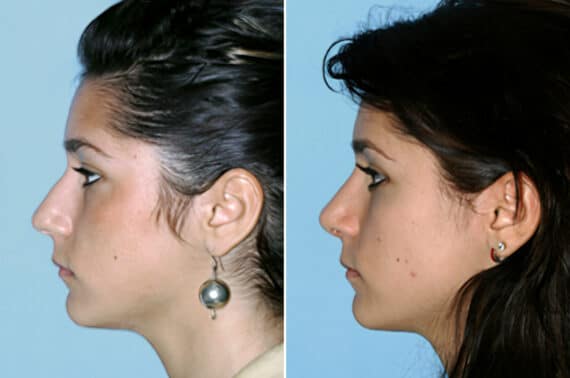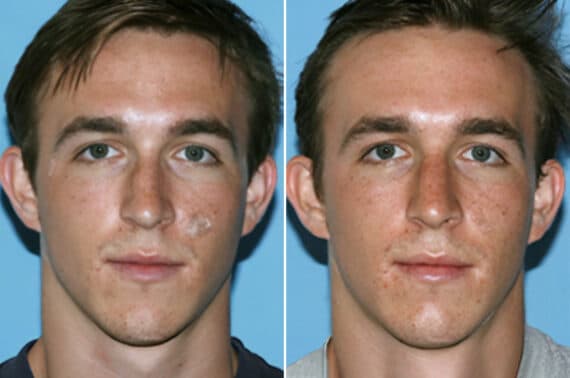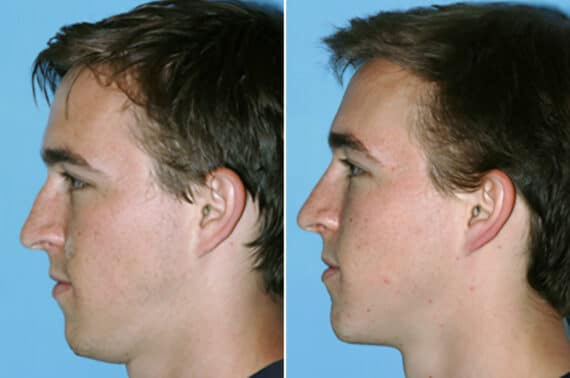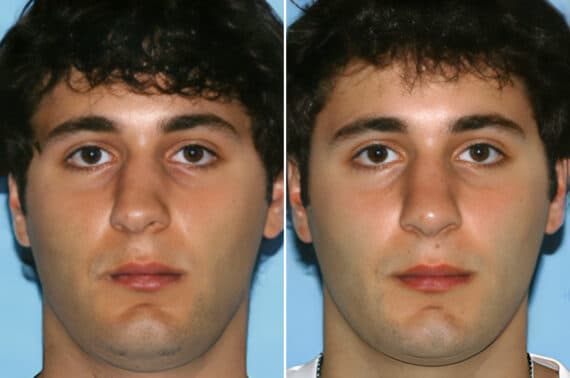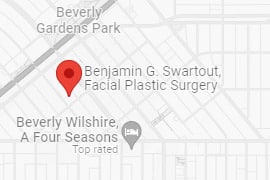Rhinoplasty is a common facial surgery. Though it creates some scarring, most patients notice only slight, almost invisible marks. The degree and clarity of scars depend largely on the method a surgeon uses, the surgeon’s expertise, and individual recovery qualities. With expert attention and good recovery, rhinoplasty scars are often small and lessen notably over time.
This article explores the types of scars that can result from rhinoplasty, how they heal, and practical ways to minimize their appearance. Whether you’re considering the procedure or preparing for recovery, understanding what to expect can help you feel more confident in your decision.
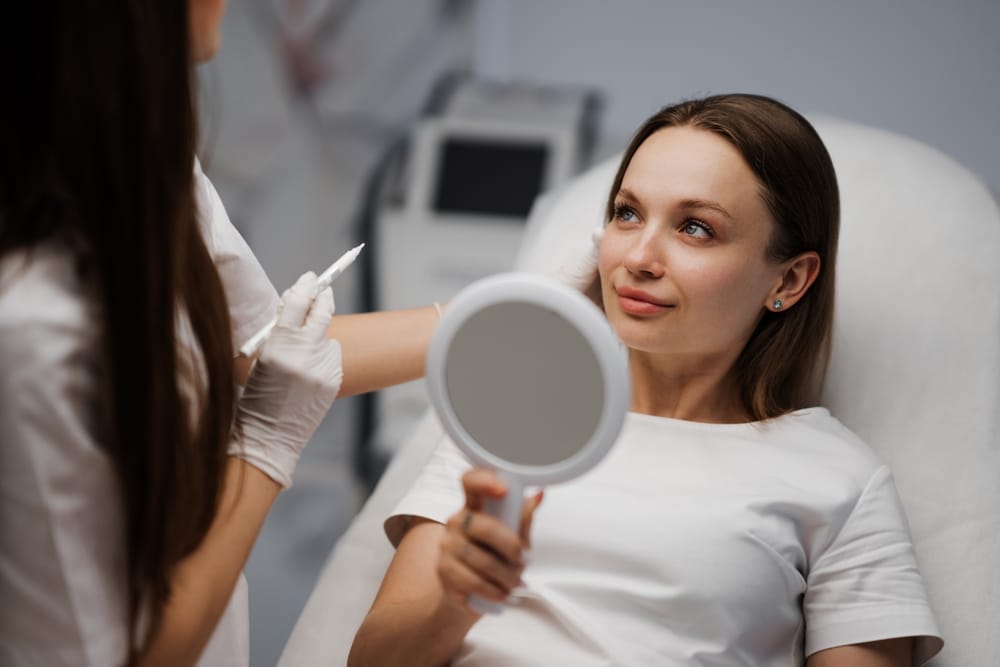
What to Know About Rhinoplasty Scars Before and After Surgery
- Choosing an experienced rhinoplasty surgeon lowers the risk of noticeable or long-lasting scars.
- Rhinoplasty can leave small scars, especially with open surgery, but they often fade over time.
- Some people may develop raised or thick scars like keloids or hypertrophic scars after rhinoplasty.
- Most open rhinoplasty scars improve noticeably within a year with proper care.
- Treatments like silicone gels, steroid shots, and laser therapy can help reduce visible rhinoplasty scars.
Does Rhinoplasty Leave Scars?
Yes, rhinoplasty can leave scars, but with a skilled surgeon and proper healing, they are typically minimal. In closed rhinoplasty, incisions are made inside the nostrils, leaving no visible scars. Open rhinoplasty involves a small incision on the columella (the tissue between the nostrils), which may result in a faint external scar. The visibility of this scar depends on surgical technique, individual healing, and a person’s natural tendency to scar.
For most patients, the scar fades well over time and is barely noticeable, especially when the procedure is performed by an experienced specialist. In fact, a study published in Plastic and Reconstructive Surgery found that 94% of open rhinoplasty patients had scars rated as “invisible” or “minimally visible” one year post-op by independent evaluators.
Types of Scars From Rhinoplasty
Every patient’s healing process is unique, and the type of scar that forms after rhinoplasty can depend on several factors, including surgical technique, individual skin type, and post-operative care. While most scars are minor and fade over time, some patients may experience more noticeable scarring. Below, we’ll explore the different types of scars that can develop after rhinoplasty and what you can do to manage them effectively.
Regular Rhinoplasty Scar Tissue
This scar tissue is a natural part of the healing process following rhinoplasty. In most cases, it is mild and fades over time without affecting the nose’s overall appearance or function. Proper post-operative care, including following your surgeon’s instructions, can help ensure that regular scar tissue heals smoothly and remains unnoticeable.
Rhinoplasty Keloid Scar
Keloid scars extend beyond the original incision site and can be more problematic than typical scar tissue. They are raised, firm, and can cause both aesthetic and functional concerns. While keloids are less common on the nose, studies show that individuals with darker skin types are significantly more prone to keloid formation—up to 15 times more likely—making personalized scar prevention strategies especially important for these patients.
Rhinoplasty Hypertrophic Scars
Hypertrophic scars are raised, red scars that remain within the boundaries of the original incision. While they may cause discomfort or a feeling of tightness, they often improve over time with proper care. Treatments such as silicone gel, laser therapy, or corticosteroid injections can help reduce their appearance and alleviate any associated discomfort.
Rhinoplasty Adhesions
Adhesions are bands of internal scar tissue that can form between nasal structures, potentially affecting both the shape of the nose and the ability to breathe properly. These scars may cause obstructions or discomfort and, in some cases, require surgical intervention to correct. Proper post-operative care and monitoring can help minimize the risk of developing adhesions.
Open Rhinoplasty Scar Healing Time
Healing from an open rhinoplasty is a gradual process that varies from patient to patient. While initial healing takes place within the first few weeks, complete scar maturation can take up to a year or longer. Below is a general timeline of what to expect during the healing process.
Weeks 1-3
During the first few weeks of recovery, patients will notice the most significant post-surgical changes. Swelling and bruising around the nose and eyes are common, and external incisions begin the initial healing phase. The scar at this stage is typically red and prominent, but as the body repairs itself, the intensity of discoloration gradually diminishes. Keeping the surgical site clean and following aftercare instructions will help ensure a smoother healing process.
Initial weeks
Months 1-3
As the healing process progresses, the scar begins to mature and refine itself. By this stage, the initial redness and inflammation start to subside, and the incision site gradually becomes less noticeable. The tissue softens, and the scar begins blending more seamlessly with the surrounding skin. Patients may also experience subtle improvements in skin texture as collagen production continues. While some residual discoloration may remain, diligent scar care—such as hydration, sun protection, and gentle massage—can further promote a smoother and more natural-looking recovery.
First months
Months 4-6
By this stage, the healing process continues as the scar gradually loses its initial redness and starts to blend more naturally with the surrounding skin. Some patients may still notice slight elevation or uneven texture, but these issues often diminish over time. The skin around the incision site continues to regenerate, and collagen remodeling helps refine the scar’s appearance. Consistently following post-surgical care instructions, including keeping the area moisturized and protected from sun exposure, can further aid in minimizing any lingering discoloration or textural irregularities.
Most of the recovery
Year One and Afterward
By the one-year mark, rhinoplasty scars typically reach their final appearance. The once-visible incision lines have generally faded and flattened, blending seamlessly with the natural contours of the nose. While most patients see significant improvement by this time, subtle refinements can still occur beyond the first year. Patience is essential, as factors such as skin type and individual healing responses continue to play a role in scar maturation. Proper skincare and sun protection remain beneficial in maintaining optimal results.
Final results
Before & After Photos
*Each patient is unique and individual results may vary.
Rhinoplasty Scar Managing Tips
Proper scar management can significantly improve the healing process and help minimize any visible marks left after rhinoplasty. While scars naturally fade over time, taking proactive steps can enhance their appearance and ensure a smoother recovery. Below are some essential tips for managing rhinoplasty scars effectively.
- Massage the Scar – Gentle massaging of the scar tissue can help improve circulation, break down excess collagen, and soften the scar over time. Be sure to follow your surgeon’s recommendations on when to start massaging the area.
- Stay Hydrated – Keeping your body well-hydrated promotes skin elasticity and overall healing. Drinking plenty of water can help your skin repair itself more effectively, reducing scar visibility.
- Maintain a Healthy Diet – A balanced diet rich in vitamins C and E, along with protein, helps support collagen production and tissue repair. Nutrients play a crucial role in the skin’s ability to heal properly and reduce scarring.
- Avoid Sun Exposure – Direct sunlight can darken scars and make them more noticeable. Always apply sunscreen with SPF when going outside or wear protective coverings to shield the healing skin.
- Follow Postoperative Instructions – Adhering to your surgeon’s aftercare guidelines is essential for proper scar healing. This includes cleaning the incision site, applying recommended topical treatments, and avoiding any activities that might put stress on the healing tissue.
How to Get Rid of Rhinoplasty Scars
Even with diligent aftercare, some individuals may find that their scars do not fade as much as they’d like. Fortunately, there are several ways to reduce rhinoplasty scars, ranging from non-surgical treatments like rhinoplasty scar creams to revision procedures. Depending on the severity of the scarring and individual healing responses, different approaches may be necessary to achieve the best results.
Non-surgical Rhinoplasty Scar Reduction
For those looking to reduce rhinoplasty scars without undergoing additional surgery, non-invasive treatments can offer effective solutions. These methods focus on improving scar appearance, reducing redness, and promoting smoother skin texture.
Silicone Gel Sheets or Gels
Silicone gel sheets or topical gels are widely used to improve the appearance of scars. They work by hydrating the skin, reducing redness, and flattening raised scars over time. Regular application can promote smoother healing and make scars less noticeable, especially when used consistently as part of a scar management routine.
Steroid Injections
Steroid injections are commonly used to treat raised or thickened scars by reducing inflammation and collagen buildup. These injections help soften and flatten scars over time, making them less visible. Typically administered in a series, they can be an effective option for hypertrophic scars or early-stage keloids.
Laser Treatments
Laser treatments can help reduce the appearance of rhinoplasty scars by targeting pigmentation and promoting collagen remodeling. These procedures work by resurfacing the skin and stimulating new cell growth, leading to a smoother texture and less noticeable scarring over time. Multiple sessions may be required for optimal results.
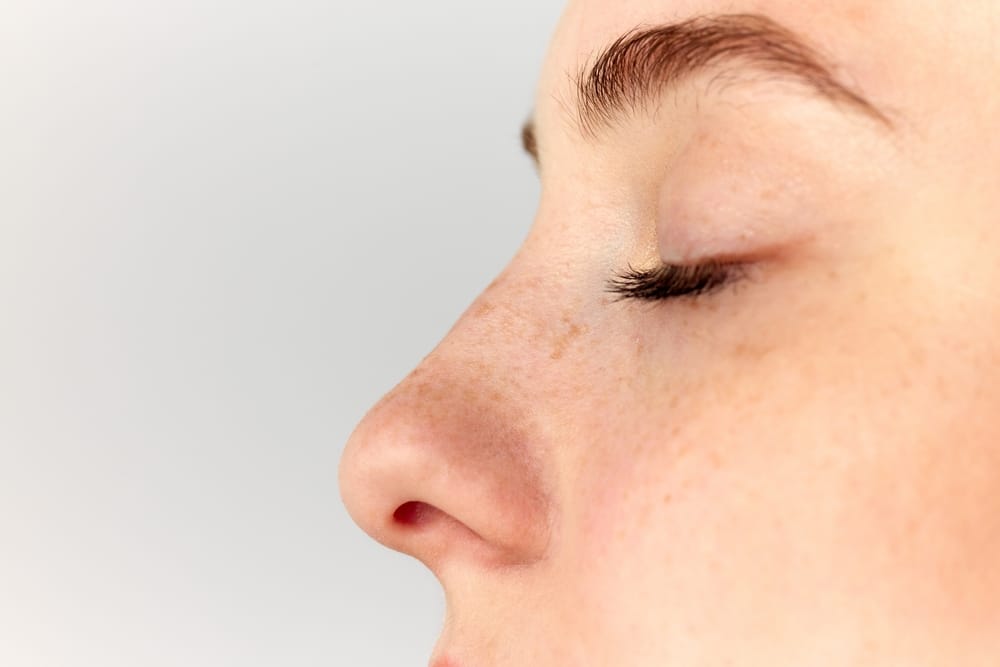
Nose Revision Surgery
For some patients, scar revision surgery may be the best option if their rhinoplasty results are generally satisfactory but visible scarring remains a concern. This procedure, often referred to as reconstructive scar revision, focuses on refining the appearance of the scars without altering the underlying nasal structure. Techniques such as laser resurfacing, steroid injections, or minor surgical adjustments can help reduce scar visibility and create a smoother, more natural look.
On the other hand, if both the aesthetic outcome and scarring from the initial rhinoplasty are unsatisfactory, revision rhinoplasty may be the better solution. This procedure not only addresses scarring but also corrects any functional or cosmetic concerns left from the first surgery. A skilled surgeon can refine nasal contours, improve breathing function, and ensure that scarring is minimized through meticulous surgical techniques. Given the complexity of revision procedures, choosing an experienced specialist is crucial for achieving the best results.

Reveal Your Best Look with Minimal Rhinoplasty Scars
Trust our expert team to guide you through healing with care, precision, and proven scar-minimizing techniques.
How to Choose the Best Rhinoplasty Surgeon
Choosing a highly skilled and experienced rhinoplasty surgeon is crucial for achieving optimal results with minimal scarring. The nose is a delicate and complex structure, and an expert surgeon will use advanced techniques to ensure scars are as inconspicuous as possible while also preserving or enhancing nasal function.
Dr. Benjamin Swartout is a Harvard-educated nose specialist with extensive experience in rhinoplasty, revision rhinoplasty, and ethnic rhinoplasty. Having authored numerous articles and book chapters on aesthetic facial surgery, Dr. Swartout is a leading authority in nasal surgery. He frequently corrects prior rhinoplasty procedures performed by other surgeons and is dedicated to refining techniques that create both long-lasting beauty and optimal nasal function.
If you’re considering rhinoplasty or need a revision procedure, contact us today at 310-275-0704 or visit our contact page to schedule a consultation.

